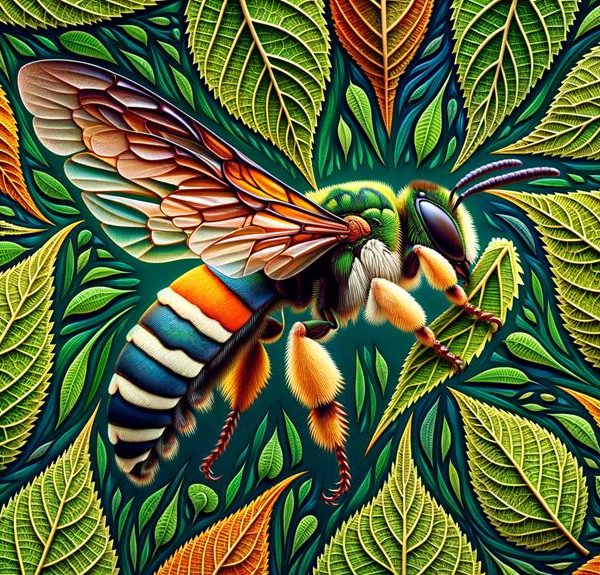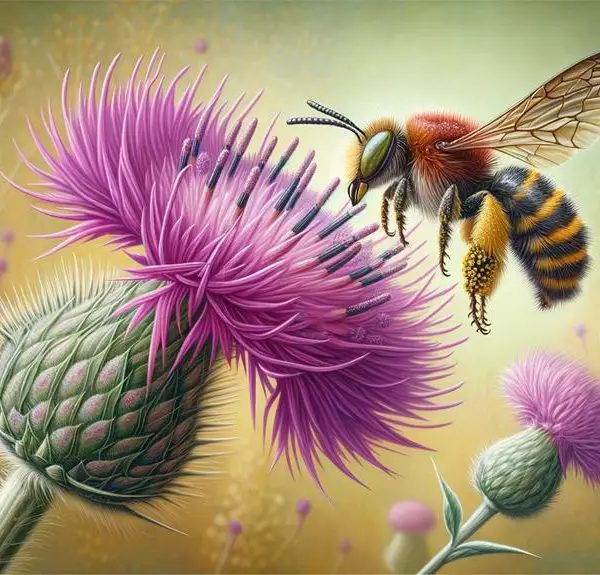Take a surprising journey into the world of Domino Cuckoo Bees, where nothing is as 'bee-sic' as it seems!
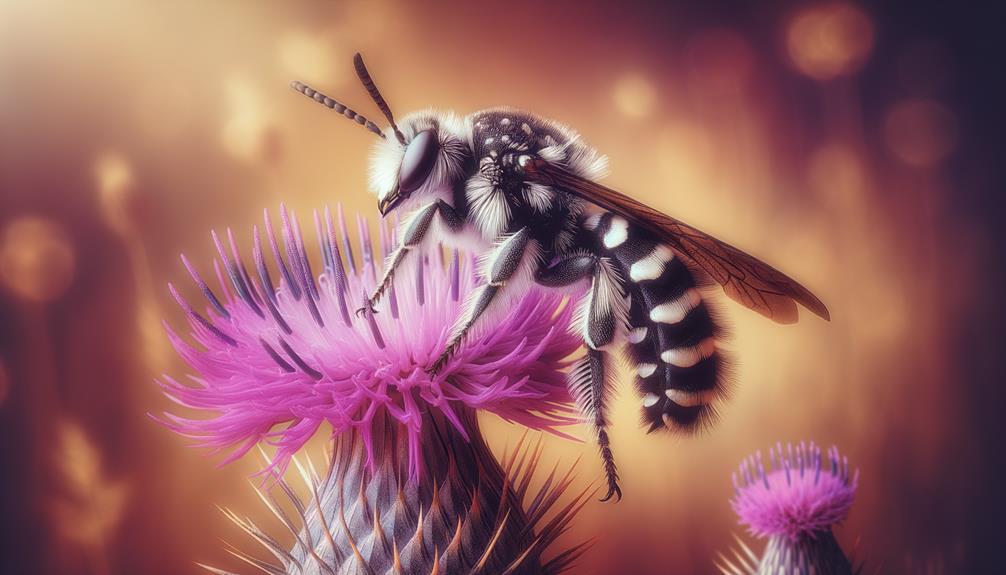
Domino Cuckoo Bee Facts
Dive into the diverse domain of the Domino Cuckoo Bee, a fascinating insect with an unusual lifestyle.
Did you know these intriguing creatures don't actually build their own nests? Instead, they're known to stealthily sneak into the nests of other bees to lay their eggs, hence the 'cuckoo' in their name.
But that's just the tip of the iceberg. What other peculiarities does this bee hold in its behavior, life cycle, or role in the ecosystem?
Let's unpack the lesser-known facts about these distinctive bees.
The Unusual Life Cycle of Domino Cuckoo Bee

In the world of insects, the life cycle of the Domino Cuckoo Bee stands out due to its peculiar and fascinating characteristics. Unlike most bee species, you'll find these bees don't construct their own nests or care for their young. Instead, they've adopted a deceiving lifestyle known as brood parasitism, a trait shared with cuckoo birds, hence the name.
You see, female Domino Cuckoo Bees seek out the nests of other solitary bee species. Their keen senses allow them to locate these nests, even if they're cleverly hidden. They then infiltrate these nests, laying their eggs in the cells prepared by the host bee. The host, unknowingly, seals the cell, providing the perfect environment for the cuckoo bee's offspring to grow.
Once hatched, the cuckoo bee larva will consume the food stored by the host bee, and often the host's offspring too. This ensures its survival and successful development into an adult bee. Interestingly, this parasitic lifestyle has resulted in the Domino Cuckoo Bee's lack of pollen-collecting structures, a usual feature in most bees. This life cycle truly demonstrates nature's intriguing complexities and adaptations.
Physical Characteristics of Domino Cuckoo Bees
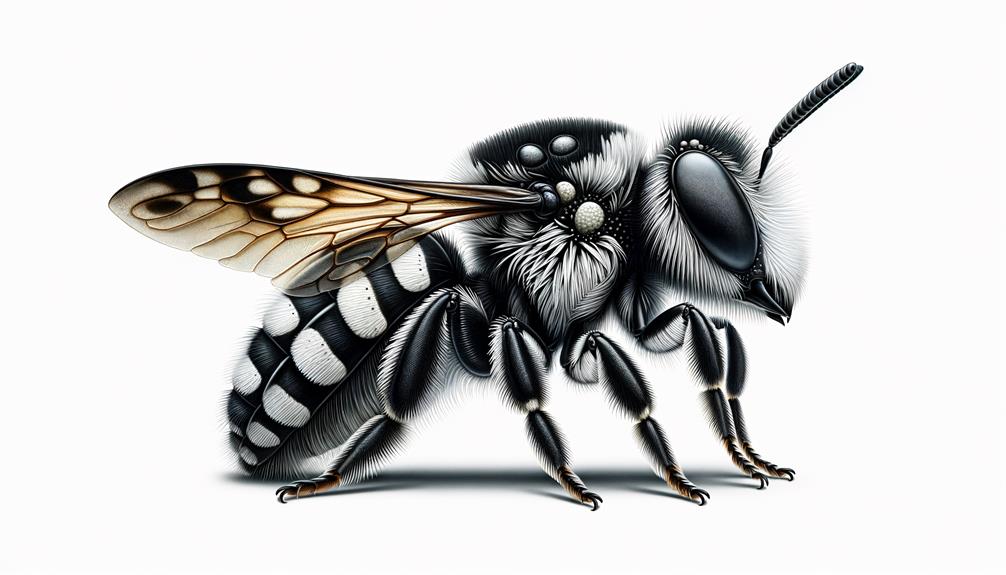
Moving on to their physical traits, you'll find that Domino Cuckoo Bees are quite distinctive with their striking black and white banded bodies. This coloration isn't only visually captivating, but it also serves a biological purpose in the world of these bees. Their hue and pattern are a form of aposematism, a unique strategy used in nature where a creature's bright coloration warns potential predators of their unpalatability or harmfulness.
Let's delve deeper into the physical characteristics of the Domino Cuckoo Bee:
- Size: They're generally small to medium-sized, with a body length ranging between 5 and 15 mm.
- Wings: These bees have relatively short, transparent wings with a smoky tint, and their veins are dark, aligning with their overall color scheme.
- Antennae: Domino Cuckoo Bees exhibit antennas with 12 segments in males and 13 in females, helping in various sensory functions.
- Mouthparts: They've long, specialized mouthparts that are adapted for nectar feeding from a variety of flowers.
In a nutshell, these are the main physical traits of Domino Cuckoo Bees that make them stand out in the world of insects. Their distinctive look is a testament to the incredible diversity and adaptability found in nature.
The Intriguing Behavior of Domino Cuckoo Bees
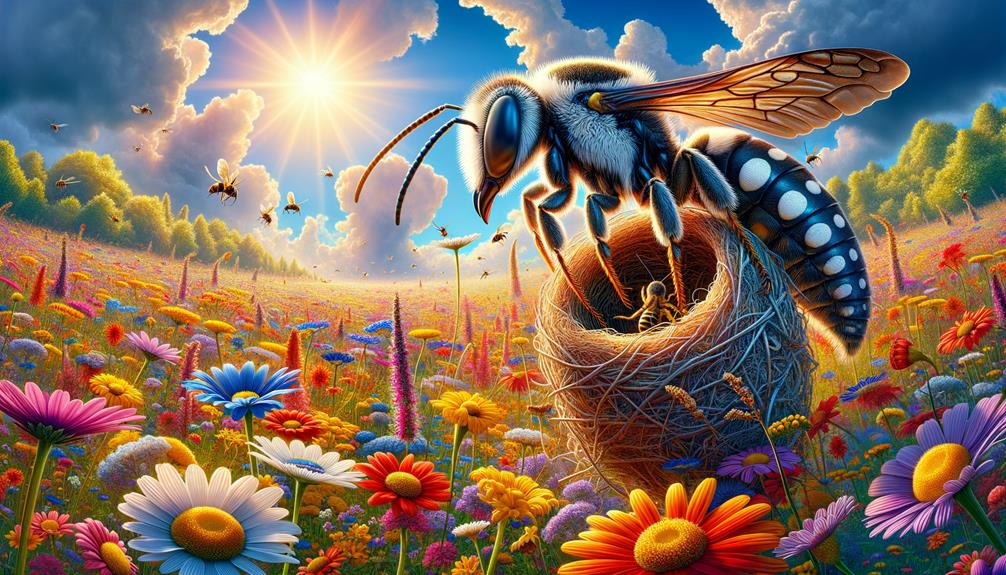
Beyond their striking physical characteristics, you'll find the behavior of Domino Cuckoo Bees equally intriguing, marked by fascinating survival strategies and unique life cycle patterns. They're kleptoparasites, meaning they don't build their own nests or collect pollen but rely on other bee species to do the labor. They lay their eggs in the nests of solitary bees, cleverly exploiting their host's hard work.
Upon hatching, the domino cuckoo bee larvae exhibit cannibalistic tendencies. They consume the host bee's eggs, larvae, and stored food, ensuring their own survival. This behavior might seem brutal, but it's a highly effective survival strategy these bees have evolved over time.
Interestingly, unlike other bees, Domino Cuckoo Bees don't possess pollen-collecting structures. They've evolved to a parasitic lifestyle, entirely dependent on their host species for reproduction and sustenance. This is a prime example of nature's ingenuity and survival tactics.
Domino Cuckoo Bee's Role in Ecosystem
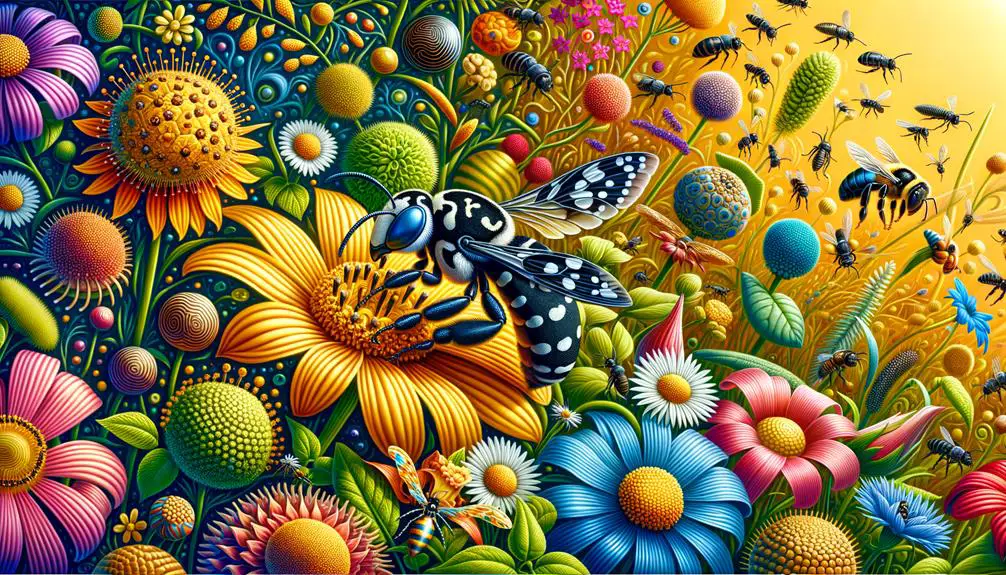
Despite their unconventional survival strategies, Domino Cuckoo Bees play a crucial role in the ecosystem, serving as nature's subtle reminder of the intricate balance between species. They contribute to biodiversity, a vital aspect that strengthens ecosystem resilience. Now, let's delve into four key roles they fulfill:
- Parasitism: They're kleptoparasites, laying their eggs in the nests of other bees, which can help control the host bee population and prevent any one species from dominating.
- Pollination: While they don't collect pollen like other bees, they inadvertently gather and distribute it while searching for host nests, aiding in plant reproduction.
- Food Source: Despite their cunning, they occasionally fall prey to other creatures, contributing to the food chain.
- Indicator Species: Their presence can be a sign of a healthy ecosystem. Their parasitic behavior is dependent on the availability of host bees, which often rely on specific plant species. Their decline could signal a problem in the ecosystem.
In essence, you can see how these bees' unique lifestyle supports the ecosystem's balance. Their existence acts as a reminder that every creature, however small or unconventional, has a role to play in maintaining our natural world.
Threats and Conservation of Domino Cuckoo Bees
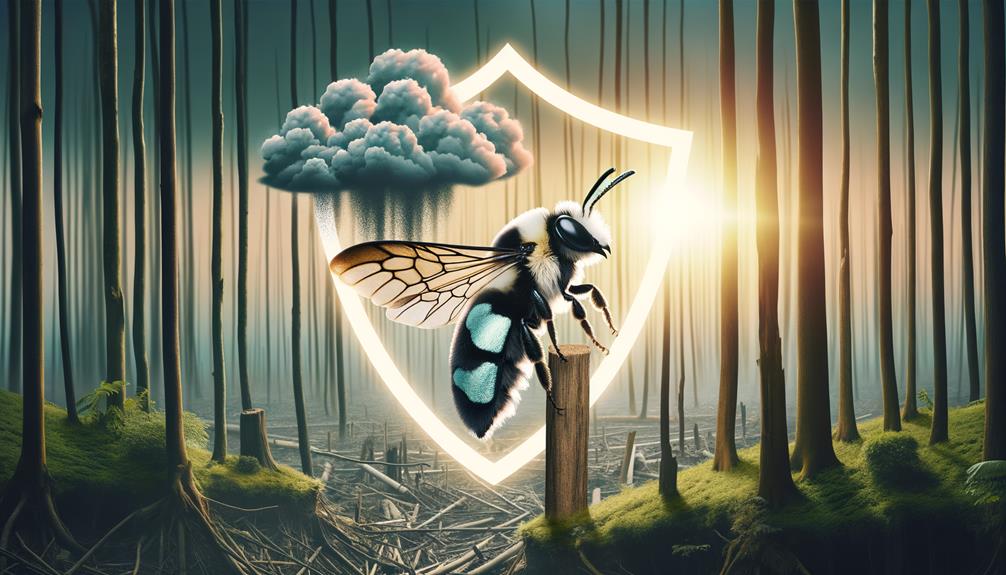
While the roles of Domino Cuckoo Bees in the ecosystem are significant, it's equally important to understand the threats they face and the efforts required for their conservation. One of the primary threats to this species is habitat loss due to land development and deforestation. Such changes can drastically reduce the availability of nesting sites and food sources for these bees, impacting their survival rates.
Pesticide exposure is another significant issue. Many pesticides are non-discriminatory, killing beneficial insects like the Domino Cuckoo Bee along with the targeted pests. Not only do these pesticides cause direct mortality, but they can also affect the bee's foraging and nesting behaviors, leading to population decline.
In terms of conservation, it's crucial to maintain and protect the natural habitats of these bees. Reducing the use of harmful pesticides and promoting organic farming can help protect these insects. Additionally, awareness and education about the importance of Domino Cuckoo Bees in the ecosystem can drive conservation efforts. Understanding and mitigating these threats are essential steps to ensure the survival and prosperity of these unique pollinators.
Conclusion
You've just explored the fascinating world of the Domino Cuckoo Bee.
Their unique life cycle, intriguing behavior, and significant role in our ecosystem truly make them stand out.
However, they're facing threats that could impact their survival.
It's crucial to understand and conserve these bees to maintain our ecosystem's balance.
Their tale is a brilliant reminder of the intricate and delicate web of life that we're all part of.

